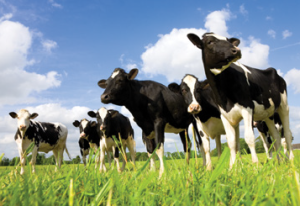Maintaining Your Pasture To Maximize Feed Quality
Click here to view as a pdf:Maintaining Your Pasture To Maximize Feed Quality
By Erik Brettingen, B.S.
Pasture is a high quality, cost-effective feed that many producers rely heavily on during the summer months. Because pasture is such a crucial feed, it is important to manage it during vulnerable times to make the most efficient use of it when it is growing. Implementation of fall and spring pasture management practices can make a noticeable difference in pasture quality and in your pocketbook during the grazing season.
In the fall, it is hard to resist the temptation to use as much pasture as possible; grazing right down to the last inch of pasture to avoid feeding stored forages and go into winter with nice “clean” looking pastures. While this practice may save you forage in the fall, it will greatly reduce your pasture’s yield the following grazing season. It is important to know that plants store much of their energy reserve for the upcoming winter in the bottom three inches of the plant. Grazing too close to the ground in the fall greatly reduces the energy reserves of the plant needed for spring regrowth. The additional pasture growth in the following grazing season will more than make up for any hay fed to allow the pasture to stay at 3 inches.
Grazing in the fall needs to be closely managed not only for the potential yield of the grass the following spring but also the safety of the livestock. Prussic acid poisoning may occur as the temperatures drop in the fall. All sorghum based species have the potential to become toxic to ruminants, especially after a freeze. When the plant freezes, toxic materials that were once bound become loose and float freely throughout the plant, making them dangerous for livestock when consumed. To be safe it is always a good idea to avoid grazing sorghum when a freeze is possible. If sorghum is grazed around the time of a freeze, wait 5-6 days after the freeze before turning animals back out on the sorghum. Spring is another time in which pasture yield is greatly affected by grazing practices. Grazing operations anticipate the spring flush of grass and look forward to getting animals back out onto pasture. Because of the grass’s benefits from both a health and nutrition standpoint, it is important to make sure the grass is well established before turning animals out. If animals are sent to pasture too early (less than 6” of growth) the ability of the plant to perform photosynthesis is compromised. Plants need adequate leaf and vegetative material to generate energy and grow at a sustainable rate.
It is important to have a grazing plan. A plan should be set up allowing animals to be moved to new grazing areas regularly without overgrazing the pasture. A plan that involves rotation is best for pasture persistence. Grazing with the idea of “take half, leave half,” is a great way to get started on managing your pastures. Pastures that have adequate residue will grow back significantly faster than those pastures that are grazed too heavily.
Another strategy that can help stressed grasses recover is called stockpiling. An area that is not grazed and allowed to grow to maturity undisturbed is called a stockpile area. A stockpile area is great for times when the pastures that have been grazed are becoming sparse or when the weather patterns create slow growth of the grasses. This area allows the stressed pastures to rest and creates a safety buffer of fresh growth during times of decreased rainfall.
Grazing well managed pastures is a terrific cost effective way to feed animals during the pasture season. By implementing some of these simple tips, producers can make the most of the pasture while it is available. Not overgrazing in the fall, making sure adequate pasture growth is present before turning out in the spring, developing a grazing plan, and setting aside stockpiles are all great ways to minimize stress on your pastures. These management strategies will maximize the yield, health and profitability of your pastures during the grazing season. Call Crystal Creek® with your grazing questions or visit our website at www.crystalcreeknatural.com to find more information about managing pastures.


